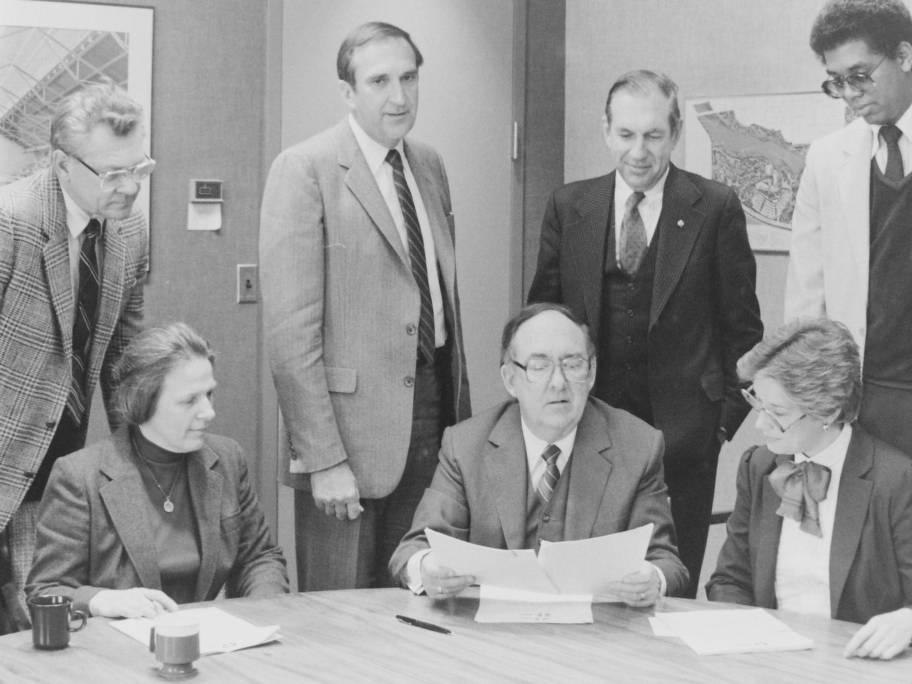The Greater Indianapolis Progress Committee (GIPC—pronounced “gypsy”) functions as an advisory arm to the mayor’s office. Unlike the earlier Indianapolis Civic Progress Association, which it supplanted, the Greater Indianapolis Progress Committee has had from its beginning a loosely defined relationship with the city’s executive branch. GIPC is a fully independent 501(c)(3) not-for-profit organization that is financially separate from the city. GIPC’s mission is to convene representatives from all sectors of the community to address the most significant issues of concern and areas of opportunity related to the progress of Indianapolis.
GIPC had its origins in the fall of 1964 when Democratic mayor appointed an advisory committee of business and civic leaders to “formulate a program of progress that makes use of the city’s full potential.” The committee’s name was adopted by the end of the year and the first executive director, John W. Walls, assumed his position in March 1965. served as the first president, and his address to the membership in June of that year, outlining the organization’s goals, is often cited as the committee’s true beginning. In this prescient talk, McKinney outlined many of the projects that were to be undertaken by the city during the next two decades.

Republican mayors , , and Stephen Goldsmith (See ) not only left GIPC in place but expanded its scope and membership. In its early years, the organization initiated the development of and Reservoir and led the drive for the downtown. The committee also provided leadership in planning the government reorganization that became known as .
In the 1980s GIPC was involved in various downtown revitalization projects (, , etc.), as well as in establishing the and the . In the words of a former committee chair: “GIPC’s approach to problem-solving… is to form a task force, gather facts and opinions, recommend a course of action, and see to it that the right organization is either created or delegated to carry out the recommended action.”
GIPC’s strength has been its ability to marshal the talents of private sector leaders and volunteers in support of public endeavors. The mayor nominates individuals to serve on the board of directors and selects an Executive Committee, which is the governing body. Despite its diverse membership, GIPC has occasionally been subject to criticism that a business elite controls it. It, however, is a broad-based organization, with a large board of directors that includes representatives of business, education, labor, government, healthcare, not-for-profits, and foundations.
The organization has also been faulted for being an unelected “shadow government”—an institution with tremendous influence on the city’s agenda but accountable to neither the electorate nor their representatives on the City-County Council. GIPC officials maintain, however, that in practice the committee is reactive rather than proactive, with its initiatives originating either in the mayor’s office or the broader community.
Some standing initiatives of GIPC include the Race and Cultural Relations Leadership Network, the Charles Whistler Award, and Plan 2020.

Help improve this entry
Contribute information, offer corrections, suggest images.
You can also recommend new entries related to this topic.